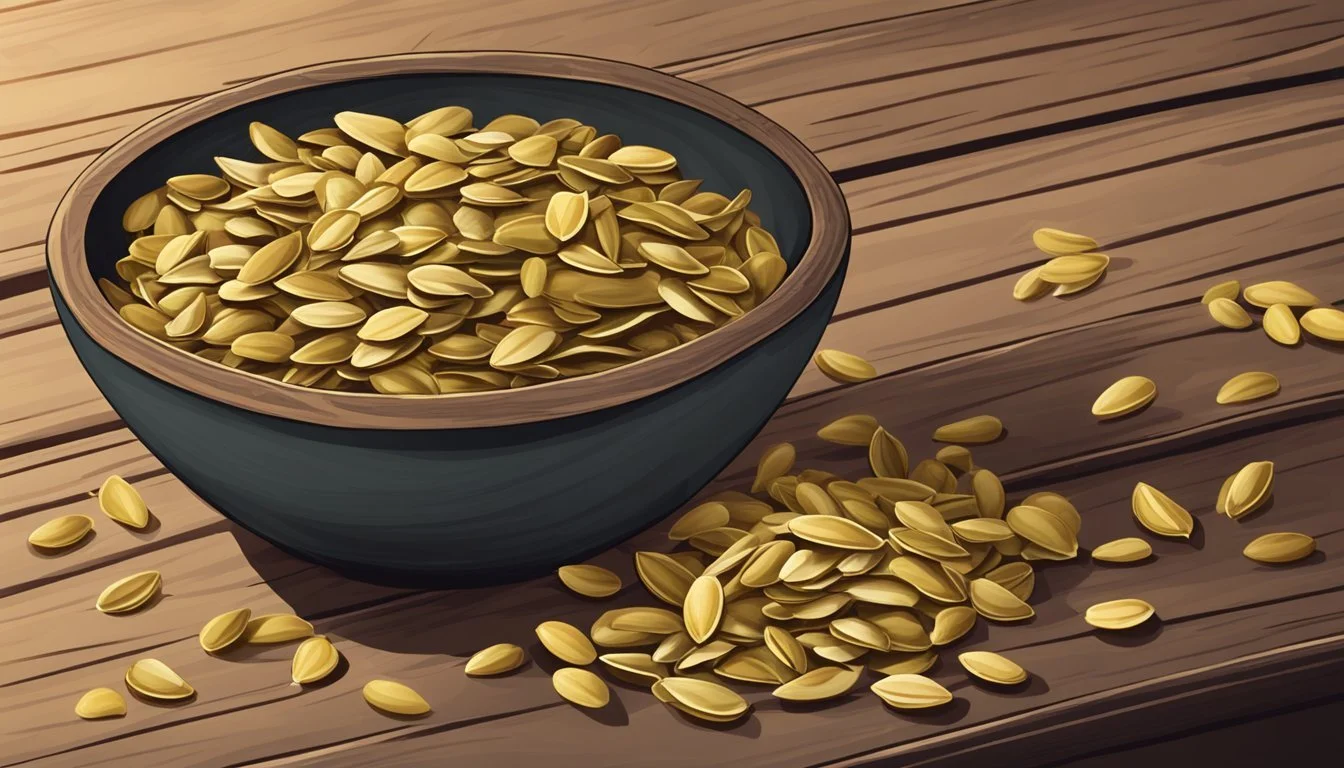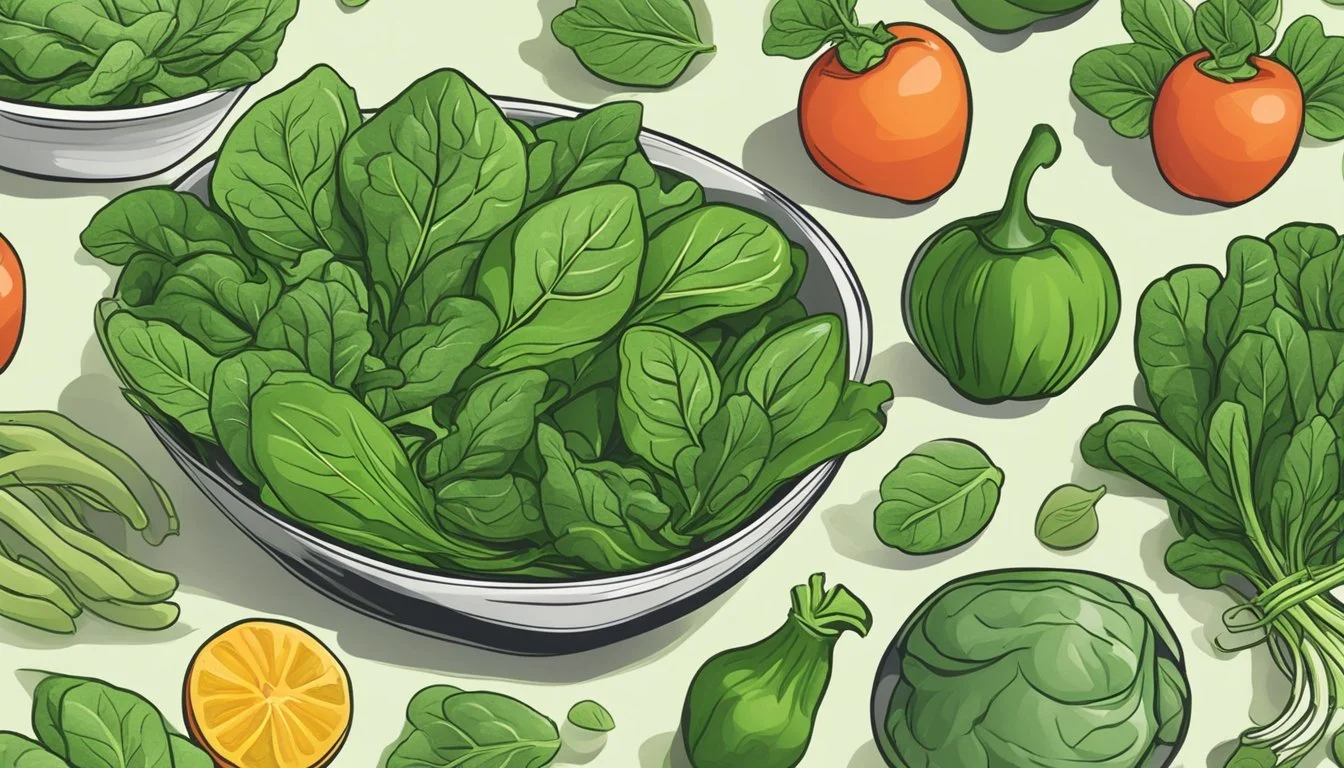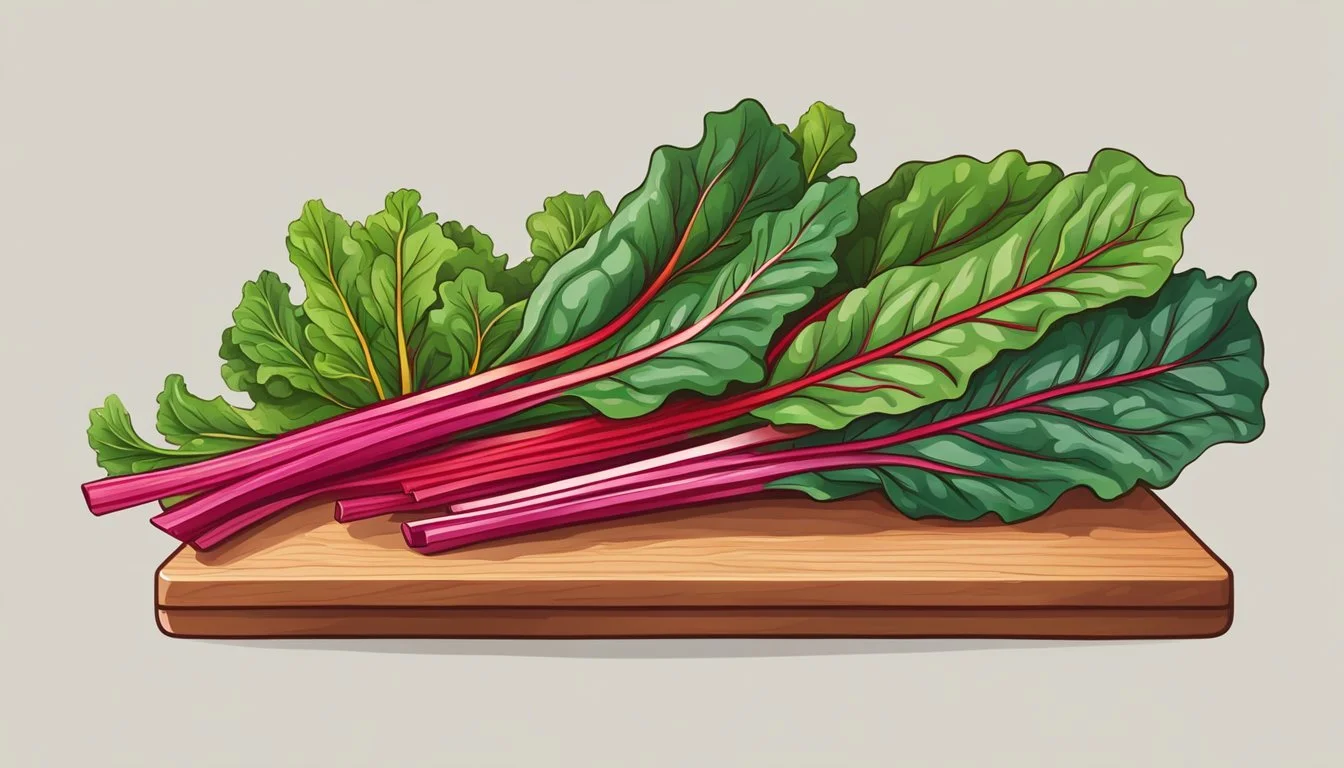Essential Chloride Sources
Essential Sources and Benefits
Chloride is an essential mineral that plays a crucial role in maintaining fluid balance, proper digestion, and nerve function within the human body. While often associated with sodium in table salt, chloride can be found in a variety of foods ranging from dairy products to plant-based sources.
Knowing which foods are high in chloride can help individuals manage their intake and ensure they meet their dietary needs. This article provides an overview of the different food sources rich in chloride, offering valuable insights for those looking to optimize their nutrition through mindful eating.
1) Seaweed
Seaweed is a significant source of chloride, a mineral essential for maintaining fluid balance, proper nerve function, and muscle contractions. Chloride works closely with sodium and potassium to perform these functions in the body.
Seaweed varieties, such as wakame, nori, and kombu, are particularly rich in this mineral. Seaweed is also known for its high content of iodine, magnesium, and calcium.
In addition to chloride, seaweed provides numerous other nutrients including vitamins A, B, C, E, and K. These vitamins support various bodily functions, such as immune response and cellular health.
Incorporating seaweed into one's diet is relatively easy. It can be added to soups, salads, and snacks. Seaweed soup, a traditional Korean dish, utilizes wakame or other types of brown seaweed.
Regular consumption of seaweed can contribute to overall health due to its rich nutrient profile. Due to its low calorie and high nutrient content, seaweed is an excellent choice for those looking to improve their diet.
2) Tomatoes
Tomatoes are a natural source of chloride. This essential mineral supports several functions within the body, including fluid balance and digestion.
A medium-sized tomato contains about 10 milligrams of chloride. Although this seems modest, when tomatoes are used in various dishes, the chloride content accumulates.
Tomato-based products, such as sauces and canned tomatoes, can have higher chloride levels due to added salt. Consuming these products contributes significantly to daily chloride intake.
Fresh tomatoes can be incorporated into salads, sandwiches, and other dishes, providing a healthy, low-calorie way to increase chloride and other vital nutrients.
3) Lettuce
Lettuce is a notable source of dietary chloride. This leafy green is commonly consumed in salads and sandwiches, making it an accessible way to incorporate chloride into the diet.
A typical serving size of lettuce is one cup, approximately 56 grams. In this amount, lettuce provides around 1% of the recommended daily intake of chloride.
Lettuce also offers additional nutrients such as fiber, vitamins A and K, and various antioxidants. These nutrients can contribute to overall health and wellness.
Including lettuce in meals is a simple way to support chloride intake while benefiting from its other nutritional properties.
4) Celery
Celery is a notable source of chloride, making it a valuable addition to diets focused on maintaining electrolyte balance. One medium stalk of celery provides a modest amount of chloride, which helps in regulating body fluids and supporting nerve function.
Each serving of celery is low in calories, yet packed with essential nutrients.
Its hydrating properties are beneficial, especially for those needing to replenish electrolytes lost through sweat.
Celery is versatile and can be easily included in a variety of meals, from salads to soups.
Aside from its electrolyte benefits, celery also contains dietary fiber, which aids in digestion. Incorporating celery into one’s diet can be a simple and effective way to boost chloride intake.
5) Olives
Olives are a notable source of chloride among various foods. This fruit, often cultivated in the Mediterranean region, is known not only for its culinary versatility but also for its nutritional content.
A serving of five olives canned in brine can provide up to 3,000 milligrams of chloride. This makes them an exceptionally rich source of this essential mineral.
Olives also offer other nutritional benefits. In a 100-gram serving, olives typically contain 115-145 calories. They are packed with healthy fats, primarily monounsaturated fats, which are beneficial for heart health.
In addition to chloride, olives contain small amounts of other minerals like potassium and iron. These nutrients contribute to their overall health benefits.
Olive oil, derived from olives, is also widely used in cooking and food preparation. It maintains some of the mineral content of olives, including chloride, depending on the processing methods.
6) Rye
Rye is a grain belonging to the wheat and barley family. It is commonly used to prepare a variety of foods and beverages. Some of the popular products made from rye include rye bread and certain alcoholic beverages like whiskey, beer, and vodka.
This grain is notable for being a significant source of chloride. Many processed foods containing rye flour also have high sodium content, further increasing their chloride levels. Rye is versatile and can be enjoyed in different forms, making it a practical choice for incorporating chloride into one's diet.
Besides being a source of chloride, rye provides other nutrients, contributing to balanced nutrition. It is worth noting that the chloride content in rye, like in other foods, may vary based on factors such as growing conditions and processing methods.
7) Sea Salt
Sea salt, a widely used seasoning, is derived from the evaporation of seawater. It retains some trace minerals, giving it a slightly different taste compared to regular table salt.
In addition to sodium, sea salt contains a considerable amount of chloride. Chloride plays a critical role in maintaining proper fluid balance, digestion, and nerve function.
Commonly employed in culinary applications, sea salt enhances the flavor of various dishes. It can be found in coarse, flake, or fine grain forms, each lending a unique texture and flavor to foods.
Although sea salt may have a lower sodium content by volume compared to table salt due to its larger crystals, it remains a significant source of chloride for those looking to maintain or monitor their electrolyte intake.
8) Pumpkin Seeds
Pumpkin seeds, also known as pepitas, are a notable source of chloride. Chloride plays a crucial role in maintaining fluid balance and proper muscle function.
In addition to chloride, pumpkin seeds are packed with beneficial nutrients like magnesium, zinc, and iron. These tiny seeds offer significant health benefits.
A single serving of pumpkin seeds provides essential omega-3 and omega-6 fats. These fats are known for supporting heart health and reducing inflammation.
Pumpkin seeds are also high in protein, making them a valuable addition to a balanced diet. Their protein content is comparable to that of high-quality soy protein.
Furthermore, pumpkin seeds contain antioxidants and various B vitamins, contributing to overall well-being. Their nutrient density makes them a versatile ingredient in many recipes.
9) Spinach
Spinach is a leafy green vegetable known for its high nutritional value. It is a rich source of many essential nutrients, including chloride. Chloride plays a crucial role in maintaining fluid balance and proper nerve function in the body.
In addition to chloride, spinach is packed with other vital electrolytes such as potassium and magnesium. These nutrients work together to support hydration and muscle function.
Spinach can be easily incorporated into various dishes. It can be eaten raw in salads, blended into smoothies, or cooked in soups and stews. Its versatility makes it a valuable addition to a balanced diet. Spinach is also low in calories, making it a healthy choice for those looking to manage their weight.
10) Swiss Chard
Swiss chard is a nutrient-rich leafy green known for its versatile culinary uses and health benefits. One notable nutrient in Swiss chard is chloride, an essential electrolyte.
Swiss chard contains a small amount of chloride, making it a modest contributing factor to one's chloride intake. Regular consumption can support maintaining a balanced diet of vital electrolytes.
Packed with a host of other nutrients, Swiss chard is low in calories yet high in potassium, calcium, and magnesium. These minerals play crucial roles in muscle and nerve function.
Swiss chard can be enjoyed raw or cooked. Each preparation method may slightly alter its nutrition profile, but both forms offer substantial health benefits. This vegetable is widely recognized for its high content of vitamins A, C, and K, adding further to its nutrient appeal.
For those looking to incorporate more chloride and accompanying nutrients into their diet, Swiss chard is a valuable addition. It’s particularly effective in diverse recipes, from salads and soups to sautés and smoothies.
Understanding Chloride
Chloride is an essential mineral crucial for various bodily functions. It is commonly found in many foods and is vital for maintaining fluid balance, digestion, and muscle function.
What Is Chloride?
Chloride is a type of electrolyte, a mineral that carries an electric charge. It is usually found in combination with sodium in table salt (sodium chloride).
Chloride helps maintain a proper fluid balance in and out of cells. It also plays a role in conducting nerve impulses and muscle contractions.
Role of Chloride in the Body
Chloride is essential for maintaining the body's pH balance. It is a key component of stomach acid (hydrochloric acid), aiding in digestion.
It also helps the body produce digestive juices. Chloride works with other electrolytes like sodium and potassium to move fluids in and out of cells, which is vital for hydration.
Daily Requirements and Recommended Intake
The dietary reference value (DRV) for chloride varies by age, sex, and life stage. For healthy adults, the recommended intake is approximately 3 grams per day. Pregnant or lactating women have similar requirements.
Excessive chloride intake can occur with high sodium consumption, as both are components of salt. It's essential to monitor salt consumption to maintain a healthy balance.
Health Benefits of Chloride
Chloride plays a vital role in maintaining the body's essential functions. Its contributions range from managing electrolyte balance to aiding in hydration and ensuring a stable acid-base balance.
Electrolyte Balance
Chloride is a key electrolyte necessary for various bodily functions. It works in conjunction with sodium and potassium to help cells carry out electrical impulses. These impulses are critical for muscle movement and nerve signaling.
Effective electrolyte balance supports proper cell and organ function. For example, it ensures that the heart beats normally and that muscles contract and relax as needed. Maintaining electrolyte balance also helps in preventing conditions like dehydration and muscle cramps.
Hydration and Fluid Balance
Chloride assists in regulating the body's hydration levels. It helps manage the movement of fluids between cells and the bloodstream. This movement is crucial for various physiological processes, including nutrient transport and waste removal.
Proper fluid balance is indispensable for healthy blood pressure levels and overall cardiovascular health. Aiding in fluid retention, chloride helps to keep cells well-hydrated, ensuring they function optimally. Imbalances in hydration can lead to issues such as hypertension or hypotension.
Strong Acid-Base Balance
Chloride plays an important role in maintaining the body's pH balance. It helps to regulate the acidity of bodily fluids, including blood and digestive secretions. This regulation is essential for metabolic processes and enzyme function.
The presence of chloride in gastric juices also supports digestion by maintaining the stomach's acidic environment. pH balance is important for preventing metabolic alkalosis and acidosis, conditions that disrupt normal cellular activities.
Potential Risks and Considerations
Chloride intake needs to be balanced, as both deficiency and excess can have significant health implications. Understanding these risks can help in maintaining proper health and dietary practices.
Signs of Chloride Deficiency
Chloride deficiency, though rare, can lead to serious health issues.
Symptoms may include fatigue, muscle weakness, and a decrease in the body's ability to manage acid-base balance. Digestive problems like diarrhea and vomiting can exacerbate chloride loss. Severe deficiency can cause hypochloremic metabolic alkalosis, a condition where blood pH becomes overly alkaline. This condition requires immediate medical attention. Sometimes, individuals on certain medications or with specific health conditions might be at a higher risk of chloride deficiency.
Excess Chloride and Associated Health Concerns
Excessive chloride intake is typically associated with a diet high in sodium chloride (table salt).
Too much chloride can lead to high blood pressure and increase the risk of heart disease. It can also strain the kidneys, which are responsible for filtering excess chloride from the body. Symptoms of excess chloride include thirst, swelling, and high blood pressure. Long-term high consumption can lead to cardiovascular problems and a higher probability of strokes. Monitoring and moderating salt intake can help reduce these risks.













